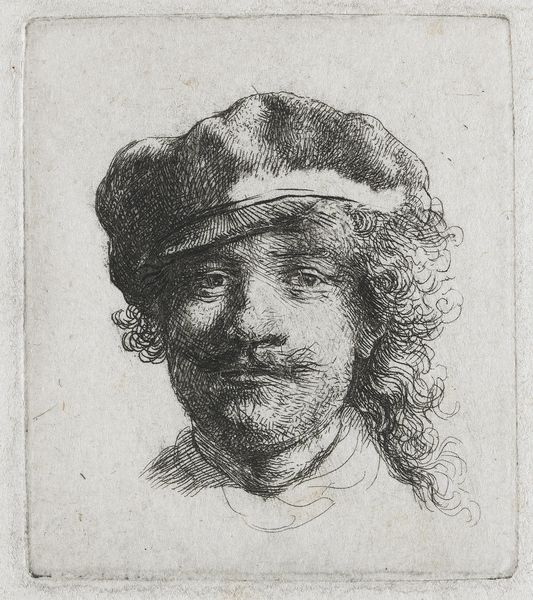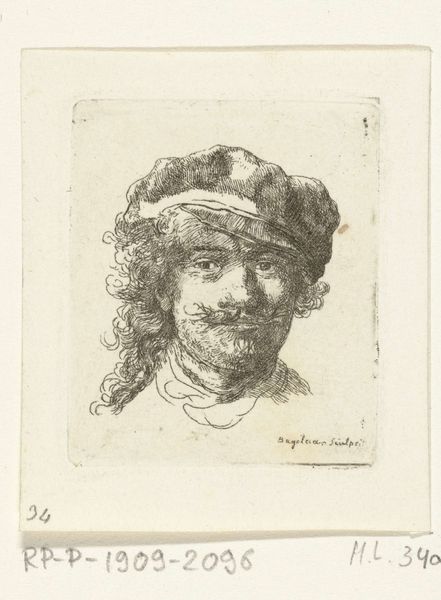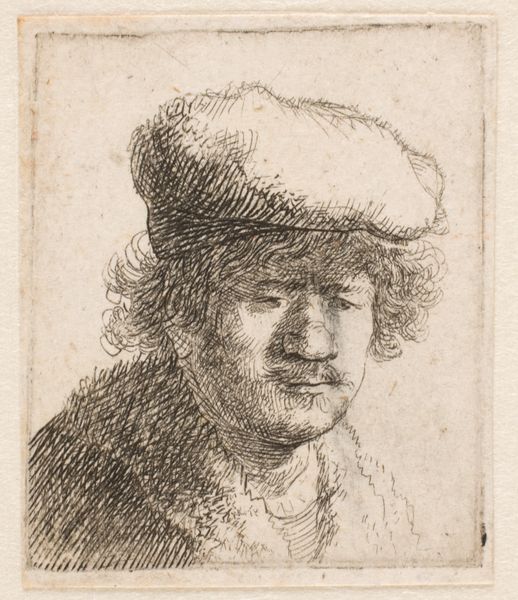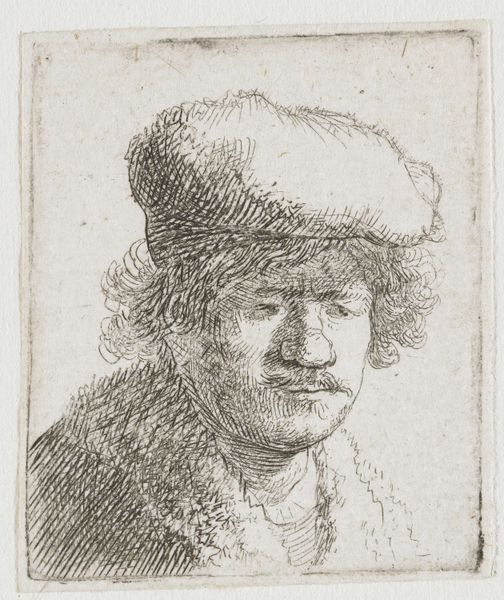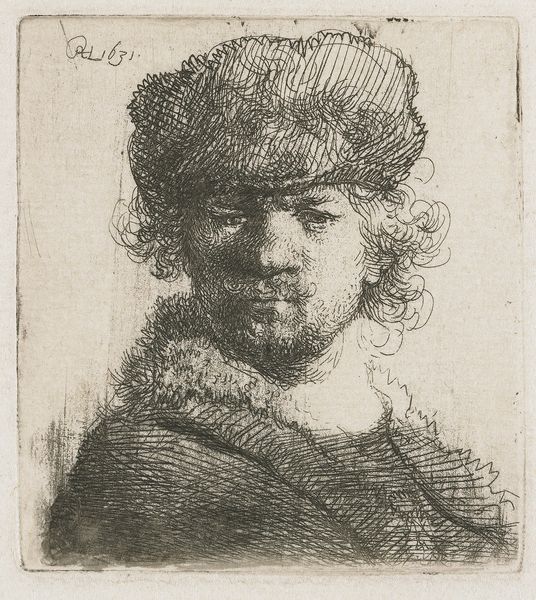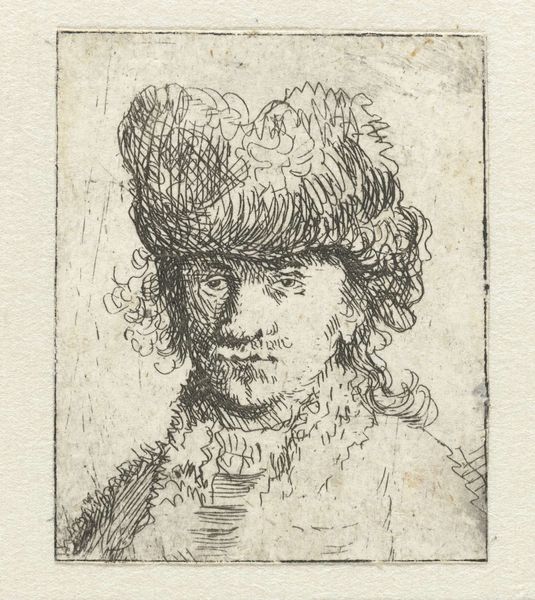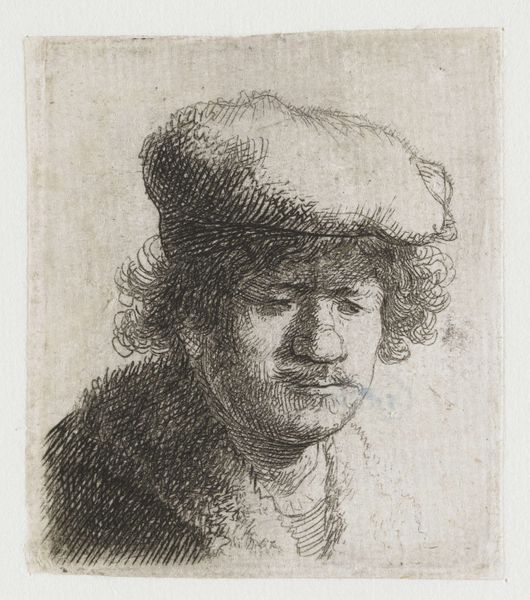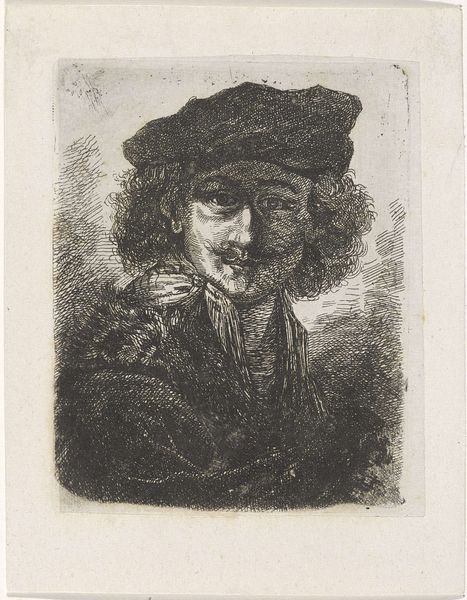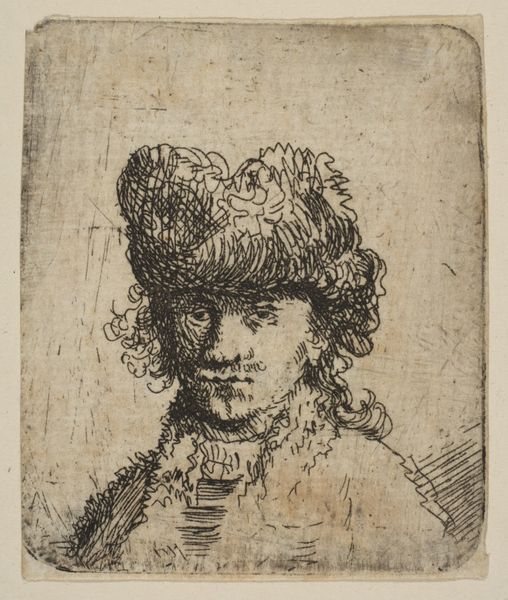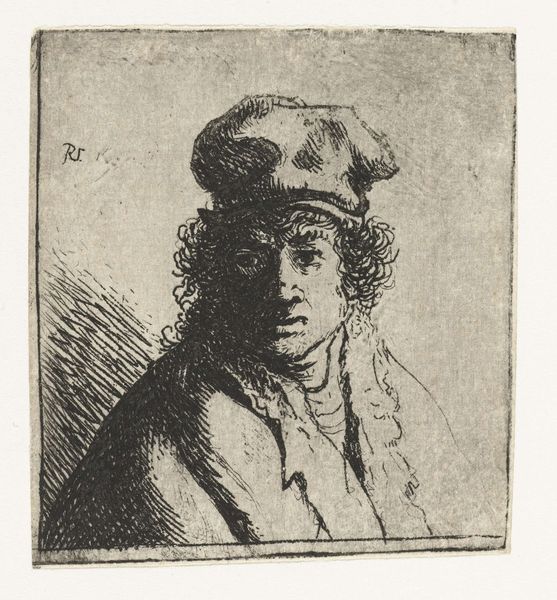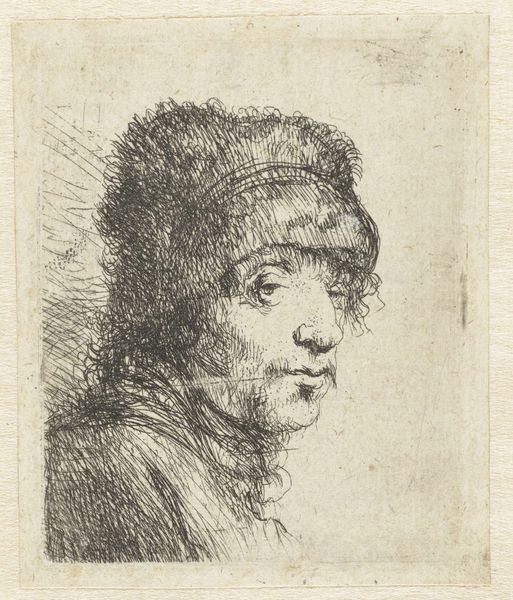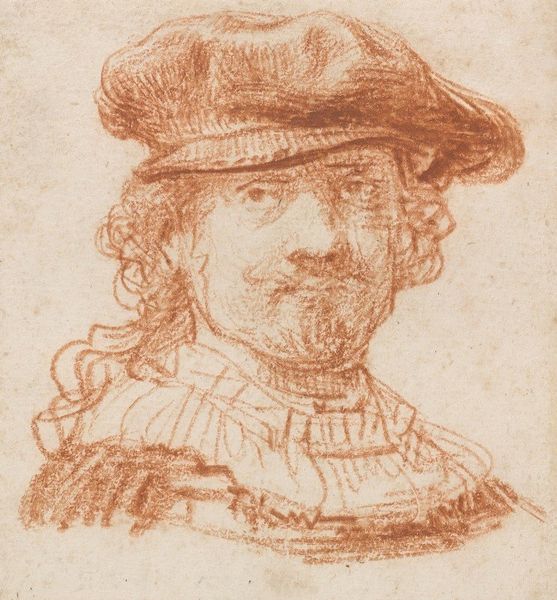
Self-portrait wearing a soft cap: full face, head only 1805 - 1844
0:00
0:00
Dimensions: height 63 mm, width 40 mm
Copyright: Rijks Museum: Open Domain
Curator: Looking at this image, one immediately confronts the raw immediacy etched—quite literally—into its surface. This is Rembrandt van Rijn’s “Self-portrait wearing a soft cap: full face, head only,” believed to have been created sometime between 1805 and 1844. Editor: Whoa, something about that gaze…it feels like he's daring me to disagree with him, you know? Very direct. Intense, but with this quiet sadness swirling around his eyes. It's heavy. Curator: Precisely! The etching captures that introspective quality perfectly. The soft cap itself acts as a signifier – a marker of the artist, perhaps of non-conformity. In many self portraits across centuries the artist would show themselves dressed and adorned to suggest social standing, intellectual curiosity and personal confidence, a visual representation of their beliefs. This artist is wearing an informal piece of clothing suggesting they are at work, are comfortable and accessible. Editor: Accessible, maybe, but not an open book, huh? See how he uses shadow, practically engulfing half his face? Almost theatrical, that play between light and dark… Like he’s presenting a partial truth, concealing as much as he reveals. Curator: Consider the era. Rembrandt lived in the Dutch Golden Age, where portraiture was a commodity, reflecting social status. Yet, he turns inward. His focus wasn’t mere likeness, but probing the self. The baroque style lends that characteristic drama, a stark counterpoint to the rising Dutch realism. Editor: Which is funny because the etching, those scribbled lines, that feels super immediate, raw and like, modern? You wouldn't peg it as the Baroque, except maybe for the melodrama happening in his eyes! He gets away with simplifying form because all of his expression, the key essence of his portrait and psychological evaluation is shown so intensely by the artist through the careful observation in capturing and emphasizing expression in the eyes. It gives the etching life. Curator: He often revisited this medium. Etching, with its capacity for intricate detail and tonal variation, became a crucial language for the artist to dissect the self and engage the human condition. He presents himself not as a titan but an everyman, wrestling with interiority, visible in every line, every shadow. Editor: It's stuck with me too. A fascinating reminder that we’re all, artists and viewers alike, perpetually self-examining in search of who we are in life, for the whole of life. A never ending pursuit in the theatre of living!
Comments
No comments
Be the first to comment and join the conversation on the ultimate creative platform.
